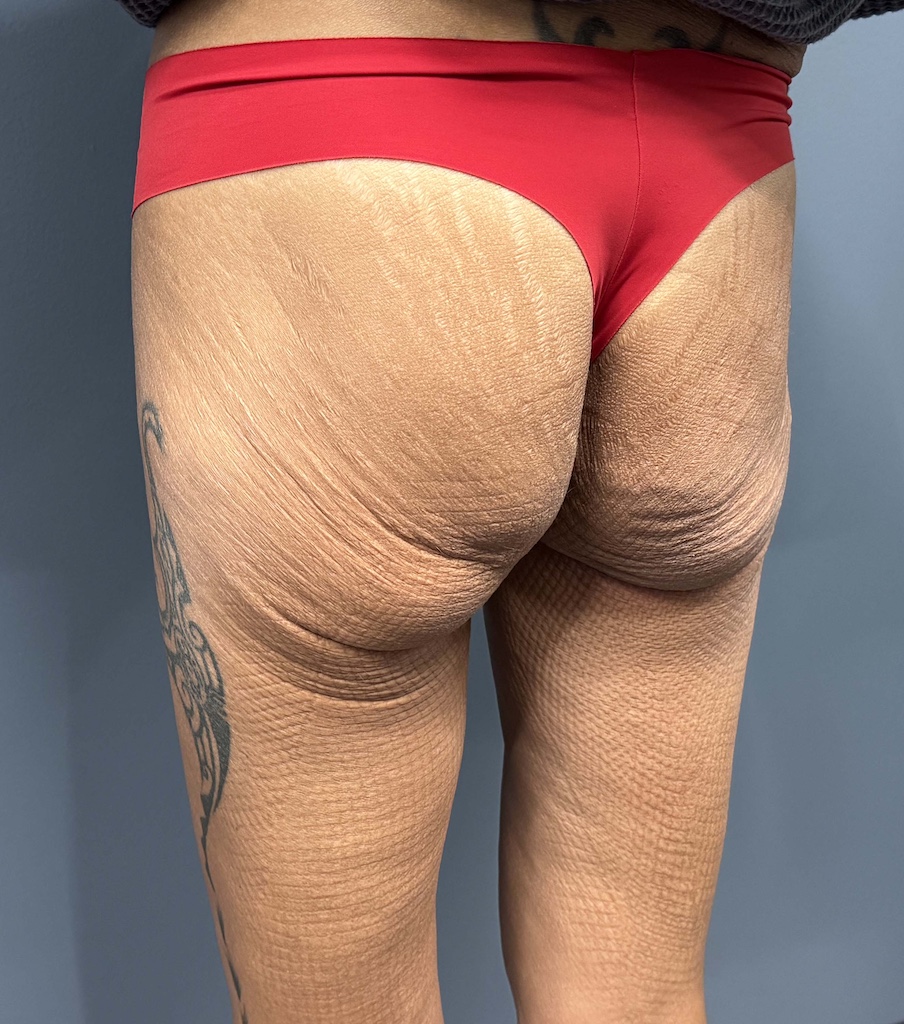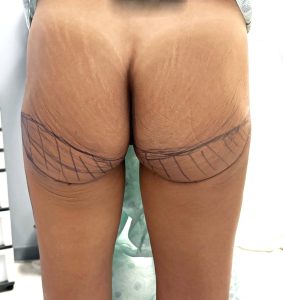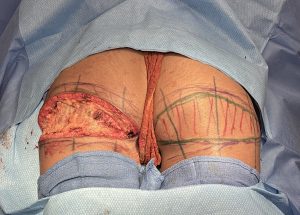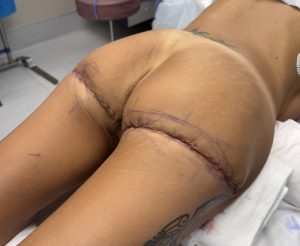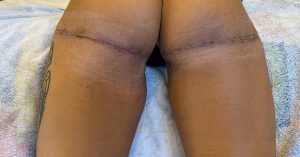Introduction
The female body features two hemispherical prominences—the breasts and the buttocks. Although located on different areas of the body, both are subject to the same natural effect of gravity: ptosis, or sagging. This descent occurs due to stretching and loss of tissue elasticity, often following weight loss.
While breast ptosis is well studied—with established classification systems and defined surgical correction strategies, often involving implants—buttock sagging lacks comparable structure or standardized treatment protocols.
Types of Buttock Ptosis
Buttock sagging presents in three primary types, differentiated by the position of the infragluteal fold:
-
Type I Ptosis:
The infragluteal fold remains at its normal level. The lower buttock tissue falls over the fold, creating a pseudo-elongated appearance from tissue overhang. -
Type II Ptosis:
The infragluteal fold has descended below its normal level, lengthening the buttock. Because the fold is lower, tissue overhang may be minimal or absent. -
Type III Ptosis:
There is no visible infragluteal fold or tissue overhang. The buttocks blend into the upper thighs with little to no demarcation.
Treatment Overview
Regardless of type, the primary treatment is a lower buttock lift, designed to:
-
Remove loose, hanging skin below the gluteal crease (“banana roll” area).
-
Improve buttock contour and lower definition.
-
Restore a clean, well-defined gluteal fold.
-
Correct contour irregularities resulting from weight loss, aging, or prior liposuction.
Different terminology may describe this procedure, depending on the excision pattern:
-
Type I Ptosis: A “banana roll” excision removes overhanging tissue while maintaining the fold.
-
Type II Ptosis: The excision repositions the fold upward to restore a natural buttock shape.
-
Type III Ptosis: Essentially a posterior thigh lift, this creates a new infragluteal fold higher on the thigh, defining the buttock-thigh transition and shortening buttock length.
Case Study
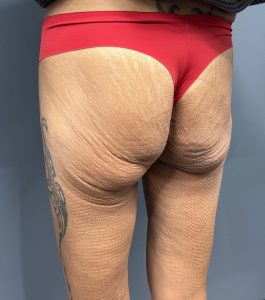
A two-stage buttock reshaping plan was developed:
-
Stage 1: Lower buttock lift to improve contour and shorten buttock length.
-
Stage 2: Volume enhancement once healing from the lift was complete.
Operative Technique
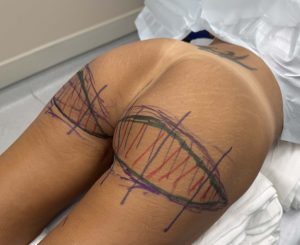
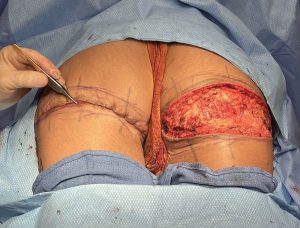
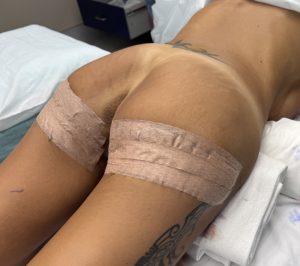
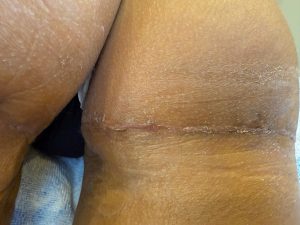
Discussion
The primary tradeoff of correcting buttock ptosis is scarring along the infragluteal crease, which may extend laterally depending on excision size. However, no non-surgical treatment provides comparable results.
-
Liposuction often worsens sagging by removing support volume.
-
Skin-tightening or fat-reduction devices offer minimal benefit at high cost.
Recovery
-
Downtime: 10–14 days before light activity.
-
Sitting: Permitted carefully on soft cushions after about one week (unlike BBLs, which restrict sitting longer).
-
Swelling/Bruising: Common for 2–3 weeks; final contour visible by 2–3 months.
-
Scar Care: The scar lies discreetly beneath the buttock crease but may take months to fade. Silicone sheeting or scar gels can optimize appearance.
Risks
Potential complications include:
-
Wound separation or delayed healing (due to tension when sitting or bending).
-
Seroma or infection.
-
Poor scarring or visible irregularities requiring revision.
-
Contour asymmetry.
Key Points
-
The definitive treatment for all types of buttock ptosis is a lower buttock excision/lift.
-
The excision pattern depends on the position of the infragluteal fold.
-
Volume enhancement with an implant or fat grafting is best performed as a secondary procedure once healing is complete.
Barry Eppley, MD, DMD
World-Renowned Plastic Surgeon

